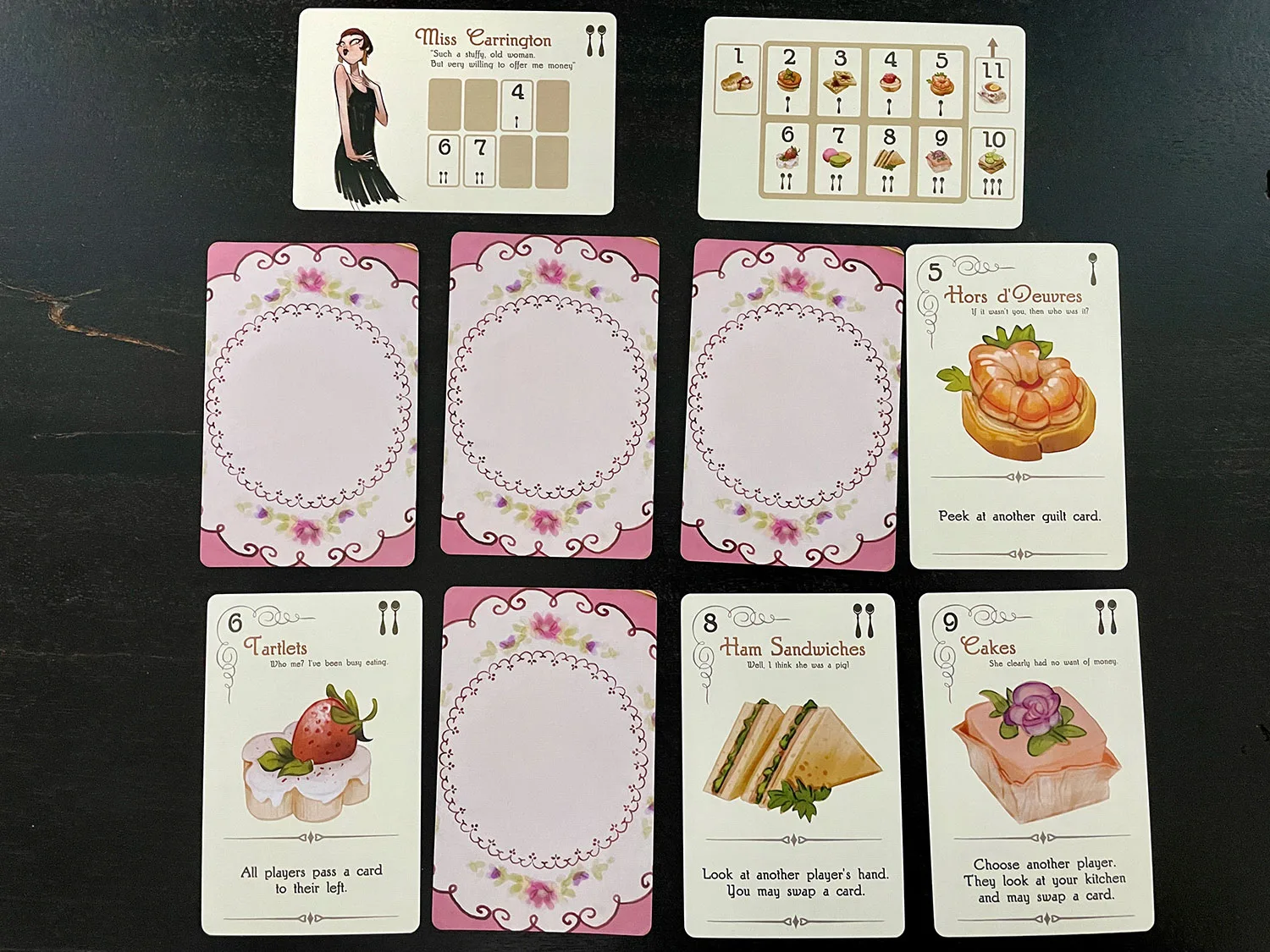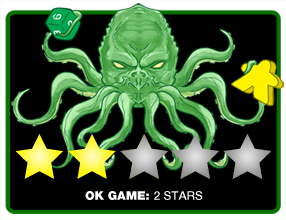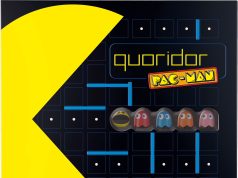 We’ve all been there. You receive your invite to the monthly high-profile tea party, get all decked out in your glorious attire, arrive ready to socialize with the other elite members of society, only to sit down to face a wonderous spread of pastry and finger sandwiches and find a blob of dark red jelly on the front of your shirt. A body hits the floor. Then all goes quiet. Eyes shift to you. Questions arise. You’re detained. Police arrive. The inspector is bold and tastes a bit of the red blob on your shirt. His eyebrows furrow as he uncuffs you. And then he detains the entire room. Someone here is a murderer. And you’re still a suspect even after all of that.
We’ve all been there. You receive your invite to the monthly high-profile tea party, get all decked out in your glorious attire, arrive ready to socialize with the other elite members of society, only to sit down to face a wonderous spread of pastry and finger sandwiches and find a blob of dark red jelly on the front of your shirt. A body hits the floor. Then all goes quiet. Eyes shift to you. Questions arise. You’re detained. Police arrive. The inspector is bold and tastes a bit of the red blob on your shirt. His eyebrows furrow as he uncuffs you. And then he detains the entire room. Someone here is a murderer. And you’re still a suspect even after all of that.
Elevenses: The Guilty Party provides a spin on its original tea party themed release from 2013 by adding a little murder to the mix. Designed by David Harding and published by Grail Games, this new release casts suspicion on all. Now, which one of you has been holding a grudge?
Gameplay Overview:
The inciting event has occurred. The host has died, and players are beginning to point fingers. Each player begins with an identical set of cards numbered one to eleven. They shuffle these and place eight of them face down in two rows of four. They also receive a guest card which becomes their role at the party and a random guilt card.
In the center table: the host’s plate, their own guilt card, as well as the sugar bowl card filled with sugar cubes which are used to signify suspicion. As guilt cards are randomly distributed and only viewable at the start of the game by their owners, no one knows who is truly guilty. By end game, if the murderer is not determined, they win. Otherwise, the innocent player with the least amount of suspicion wins.

The Guilty Party is all about efficiency of action via hand management. On a player’s turn they take one of two actions. The first is to play one card from their hand to their tableau. Players begin with three cards and can choose to play them into the proper space in their tableau (swapping it with the face-down card in that location) and must trigger its action. Actions range from swapping cards, adding, or shifting suspicion, looking at another’s guilt card, or even swapping guilt cards.
The second action is to make two re-arrangements. This allows players to swap out cards from their hand with those face down in their tableau. The cards added back to the tableau must remain face down. Due to card swapping, players may find cards from other players in their tableau.
Play continues until the end game which occurs when someone plays their elevenses card. This card can only be played if the player has six face-up cards in their tableau. As such, the elevenses card can never leave a player’s possession so that the end game can be accessed by all.
During end game, the player with the most valuable tea spread (determined by spoons on their cards) receives three suspicion cubes and based on player count, second or even third place may receive some too. After these are distributed, players take turns placing their remaining suspicion on the guest plates of their choosing.

Game Experience:
The Guilty Party is an intriguing premise that takes the original game’s objective of creating the most valuable tea spread and adding a new end game focus. The gameplay shines most in the early game when players are glancing around suspiciously at each other, unsure who is truly guilty (even the murdered host could be the guilty party). Turns are quick and due to the setup players may begin with different cards in hand. Thus, a built-in asymmetry is created immediately.
The guest cards are a nice touch as they provide value to your tea spread if you can achieve their goals, which are based on face-up cards in the spread. They also provide players with an objective and require them to strategize their card play. These cards feature fun character art as well as a quote unique to each regarding their innocence in the entire affair.

The midgame is where things start to shift. Players are taking re-arrangement turns that don’t feel satisfying. They may already know where the true guilt card lies. They may already be discovered as the murderer and are desperately trying to overcome those odds. Cards you need are taken from you. You can’t find the right number to complete your guest card. And that blob of jelly is going to stain your shirt if you don’t get out of there soon.
By the end of play, one would expect a big reveal, but instead, players are faced with counting their tea spread value and then taking time to place cubes that truly may determine the game, but at the same time deflates all the action that happened earlier. If players already know who is guilty, they can determine the winner before distribution even happens.

All of this begs the question: is the tacked-on suspicion mechanism necessary? It provides an additional layer to the game but struggles to find a true foothold on the theme. I don’t think there’s enough here to make the suspicion element maintain its surprise. At the two-player count, it’s not a fun puzzle, and at the five-player count, two players have true guilt cards, convoluting the end game even further.
There’s a slight production note to add here as well. The game only comes with five guilt cards, two of which are murder weapons and three of which are mugs of tea. In a four-player game, there is not a fourth tea card to use. Upon asking the publisher, they state that the intent was to have players use one of the two murder cards as another tea card, and that does work. But it’s so strange to not include the additional card. As such, it leaves me thinking that this is a three-player game at heart, though the four-player game works too, save the production oversight.

Final Thoughts:
In the end, I prefer the original Elevenses over this attempt. The original is a quick playing hand management game all about creating a valuable tea spread. It also has a solo version, as well as a two-player option. The theme here is what drew me in to try this out with friends, but we all agreed that this variation loses a lot of its steam once you take the lid off the teapot. The ever-dwindling action structure coupled with the shrug of an ending has us seeking other delicacies for our next tea party.
Final Score: 2 stars – A tea party that invites the wrong guests and has everyone eager for the eleventh hour.
 Hits:
Hits:
• Card/coaster illustration
• The early suspicion
• Quick to play
Misses:
• Player count limitations
• Disconnected theme
• Anticlimactic end-game





















